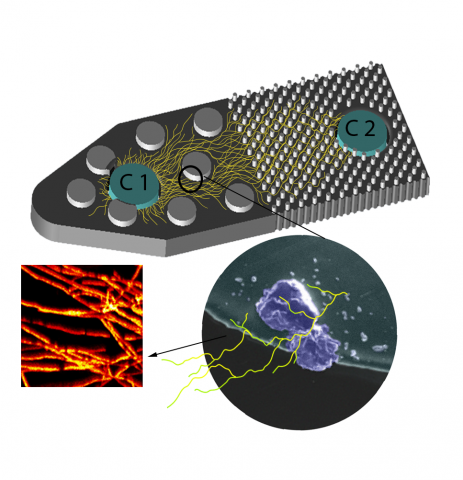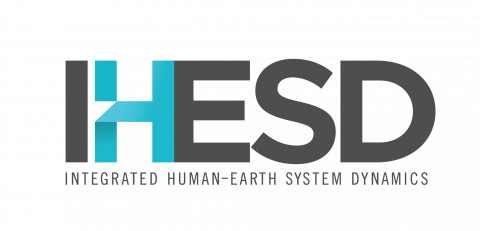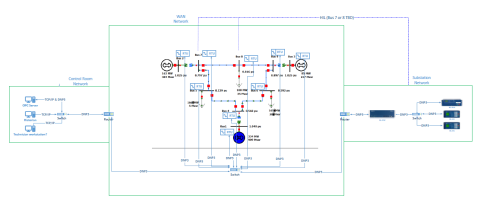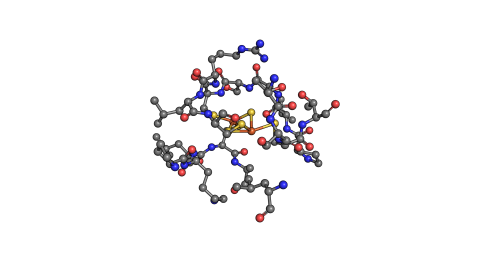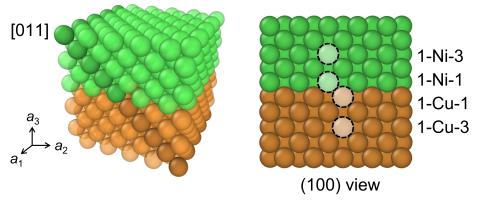Last updated on 2024-02-11T22:41:43+00:00 by LN Anderson West Nile Virus Experiment WLN003 The purpose of this experiment was to evaluate the host response to West Nile virus (strain WNV-NY99) wild-type clone 382 and mutant 382-E218A 2 nt virus infection. Sample data was obtained from mouse (strain...
Filter results
Category
- Scientific Discovery (88)
- Biology (83)
- Human Health (66)
- Integrative Omics (50)
- Earth System Science (18)
- National Security (5)
- Computational Research (4)
- Energy Resiliency (4)
- Computing & Analytics (3)
- Data Analytics & Machine Learning (3)
- Microbiome Science (3)
- Renewable Energy (3)
- Atmospheric Science (2)
- Computational Mathematics & Statistics (2)
- Data Analytics & Machine Learning (2)
- Chemical & Biological Signatures Science (1)
- Coastal Science (1)
- Computational Mathematics & Statistics (1)
- Cybersecurity (1)
- Distribution (1)
- Electric Grid Modernization (1)
- Energy Efficiency (1)
- Energy Storage (1)
- Grid Analytics (1)
- Grid Cybersecurity (1)
- High-Performance Computing (1)
- Solar Energy (1)
- Visual Analytics (1)
- Weapons of Mass Effect (1)
- Wind Energy (1)
Content type
Dataset Type
- (-) Omics (86)
- (-) Lipidomics (26)
- (-) Simulation Results (17)
- (-) Whole genome sequencing (WGS) (1)
- Transcriptomics (51)
- Proteomics (39)
- Sequencing (39)
- Metabolomics (28)
- Amplicon (16S, ITS) (15)
- Metagenomics (9)
- Microarray (9)
- Computed Analysis (4)
- Genomics (4)
- ChIP-seq (2)
- Geospacial (2)
- Staff (2)
- Cybersecurity (1)
- Electromagnetic Spectrum (1)
- Mass Spectra (1)
- Microscopy (1)
- Phenomics (1)
Tags
- Virology (61)
- Immune Response (46)
- Time Sampled Measurement Datasets (43)
- Differential Expression Analysis (41)
- Gene expression profile data (40)
- Homo sapiens (28)
- Mass spectrometry data (25)
- Multi-Omics (23)
- MERS-CoV (16)
- Mus musculus (15)
- Viruses (14)
- Health (13)
- Virus (13)
- West Nile virus (11)
- Soil Microbiology (10)
- Ebola (9)
- Influenza A (7)
- Metagenomics (7)
- sequencing (7)
- Resource Metadata (6)
- Microarray (5)
- Human Interferon (4)
- Omics (4)
- Genomics (3)
- Machine Learning (3)
- metagenomics (3)
- Microbiome (3)
- PerCon SFA (3)
- Sequencing (3)
- soil microbiology (3)
The OSU/PNNL Superfund Research Program (SRP) represents a longstanding collaboration to quantify Polycyclic Aromatic Hydrocarbons (PAHs) at various superfund sites in the Pacific Northwest and assess their potential impact on human health. To link the chemical measurements to biological activity...
Category
Please cite as : Anderson L.N., R. Wu, W.C. Nelson, J.E. McDermott, K.S. Hofmockel, and J.K. Jansson. 2021. IA-TmG.2.0 (Metagenome, IA). [Data Set] PNNL DataHub. https://doi.org/10.25584/IATmG2/1770333 Soil samples were collected in triplicate in the fall of 2017 across the three grassland locations...
Category
Last updated on 2023-05-02T18:08:23+00:00 by LN Anderson Fungal Monoisolate Multi-Omics Data Package DOI "KS4A-Omics1.0_FspDS68" Molecular mechanisms underlying fungal mineral weathering and nutrient translocation in low nutrient environments remain poorly resolved, due to the lack of a platform for...
Category
Last updated on 2024-02-11T22:41:43+00:00 by LN Anderson West Nile Virus Experiment WLN002 The purpose of this experiment was to evaluate the host response to West Nile virus (strain WNV-NY99) wild-type clone 382 and mutant 382-E218A 2 nt virus infection. Sample data was obtained from mouse (strain...
Category
Please cite as : Anderson L.N., R. Wu, W.C. Nelson, J.E. McDermott, K.S. Hofmockel, and J.K. Jansson. 2021. Iso-VIG14.1.0 (Metagenome Derived Viral Genomes, WA/IA/KS). [Data Set] PNNL DataHub. https://doi.org/10.25584/IsoVIG14/1770369 Soil samples were collected in triplicate in the Fall of 2017...
Category
These GCAM v4.3 SSP-RCP-GCM Output Databases are made available under the Open Data Commons Attribution License: http://opendatacommons.org/licenses/by/1.0/ . GCAM v4.3 SSP-RCP-GCM plausible solution databases. Supplemental dataset to: Graham N.T., M.I. Hejazi, M. Chen, E. Davies, J.A. Edmonds, S.H...
Category
The year 2014 solution files are based on model calibration effort based on inputs and data from Year 2014 as described in Khangaonkar et al. 2018). It includes water surface elevation, currents, temperature and salinity at an hourly interval. These netcdf files with 24 hourly records include...
Category
Simulated x-ray absorption spectra calculated with the FEFF code for various models of Cu incorporated into the iron oxide mineral hematite. The structures are drawn from publically available ab initio molecular dynamics simulations.
This dataset includes one baseline and three cybersecurity based scenarios utilizing the IEEE 9 Bus Model. This instantiation of the IEEE 9 model was built utilizing the OpalRT Simulator ePhasorsim module, with Bus 7 represented by hardware in the loop (HiL). The HiL was represented by two SEL351s...
A pre-trained convolutional neural network was fine-tuned for three separate classification tasks, distinguishing 2D images of: 1) single amino acids, 2) protein structural ball and stick images of metalloproteins, and 3) protein structural ball and stick images of metalloenzymes with the metal...
Data comprised of 204, 103, 89, 66, 30, and 16 gas chromatography mass spectrometry (GC-MS) runs from human cerebrospinal fluid (CSF), standards, human blood plasma, human urine, fungi species (A. niger, A. nidulans, T. reesei), and soil crust, respectively Across 4,523,251 candidate matches, 13,487...
ProxyTSPRD profiles are collected using NVIDIA Nsight Systems version 2020.3.2.6-87e152c and capture computational patterns from training deep learning-based time-series proxy-applications on four different levels: models (Long short-term Memory and Convolutional Neural Network), DL frameworks...
Cu-Ni bilayers either without defects (pristine) or with a single vacancy in the nickel layer at the interface (1-Ni-1), in the copper layer at the interface (1-Cu-1), in the central nickel layer (1-Ni-3), or in the central copper layer (1-Cu-3) were relaxed under the application of shear in the...
A trained neural net potential (NNP) was use to simulate shear in the [011] direction in Cu-Ni multilayers. We applied the NNP to a Monte Carlo scheme to generate parallel shear simulations, demonstrating the range of possible trajectories that can be obtained due to speedups provided by the NNP...




